
Sean Gallup/Getty Images News
When Is Google Stock Splitting?
Alphabet (NASDAQ:GOOG)(NASDAQ:GOOGL) recently announced a 20:1 stock split that will take place in July 2022. Shareholders of record will receive 19 additional shares for each share held after market close on Friday, July 15th. Alphabet stock will begin trading split-adjusted on Monday, July 18th. As of the writing of this article, the split-adjusted price would be around $140 per share.
A stock split has no direct effect on the underlying value of a security. The split could make Alphabet stock a candidate for inclusion in the Dow Jones Industrial Average. A stock that trades for thousands of dollars per share would not be a candidate due to the Dow’s method to calculate the index. After the split, it will be in the correct price range.
Google’s announcement has set off a wave of other high-profile split announcements. Amazon (AMZN) has announced its own 20:1 split, which has been much-anticipated. The stock will begin trading split-adjusted on June 6th, 2022.
Not to be outdone, Tesla (TSLA) has also announced that it will seek shareholder approval to set up its split. Tesla last split its stock in August 2020 – less than two years ago. As shown below, it has made another spectacular run since the split. However, before the recent announcement, the stock was swooning.
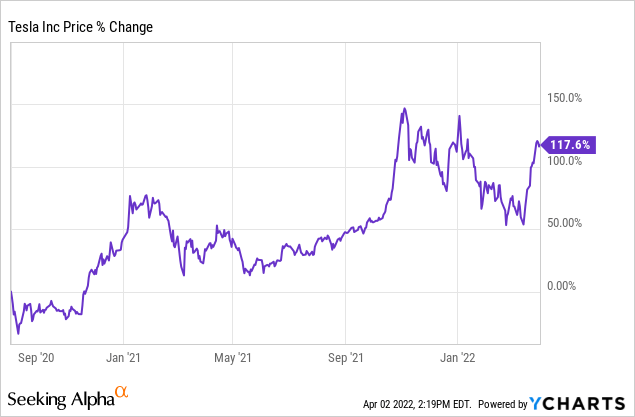
Alphabet Stock Key Metrics
Alphabet posted tremendous results in the fiscal year 2021. Sales rose 41% year-over-year (YOY) while operating profit increased 91%. Since 2020 was somewhat of an anomaly due to the pandemic, it is essential to look at the compounded annual growth rate (CAGR) that includes 2019 when discussing growth.
Revenue rose at a CAGR of 26% over this period, while operating profits increased at a CAGR of 52% – very impressive on both counts. As shown below, operating profit grew at a higher rate due to a more robust operating margin in 2021.

Data Source: Alphabet. Chart by author.
Looking at the bottom line, the diluted earnings-per-share (EPS) for 2021 reached a record $112.20. This was a massive increase over the $49.16 and $58.61 earned in 2019 and 2020.
In addition to the increased margins, the massive increase in EPS is assisted by the company’s continued stock buybacks. Alphabet repurchased over $80 billion in stock in 2020 and 2021 combined. This amounts to a little over 4% of the current market cap.
What Is The Long-Term Outlook For Google Stock?
Google Search continues to be the straw that stirs the drink for Alphabet, providing more than 57% of the company’s 2021 revenue on 43% YOY growth. However, YouTube ad sales were impressive, with a 46% growth in 2021. YouTube ad sales are up over 90% since 2019.
Google Cloud sales have also been on a terrific growth trajectory. In 2018, the segment provided less than $6 billion in sales. This segment reached over $19 billion in sales in 2021, as shown below.

Data Source: Alphabet. Chart by author.
The Google Cloud segment is not profitable, in stark contrast to Amazon’s AWS segment. In 2020 and 2021, the Google Cloud segment posted operating losses of $5.6 billion and $3.1 billion, respectively. Meanwhile, AWS has an operating margin of around 30%.
This presents a tremendous area of profitability that Google has yet to tap. As this segment scales, the profits should come. As shown below, the operating loss shrunk significantly in 2021.

Data Source: Alphabet. Chart by author.
The Google Cloud segment could provide substantial future profits if management can swing this segment to profitability and increase the margin while continuing to increase sales.
Is Google Stock A Buy Before Or After The Upcoming Split?
Whether to buy a stock before or after a split is a conundrum for investors. The stock often gets a pre-split push as investors anticipate the stock’s rise. Then there can be a letdown after the stock has split.
Tesla announced its 2020 split on August 11th, and the stock rose right up until the day of the split, only to fall in the days following.
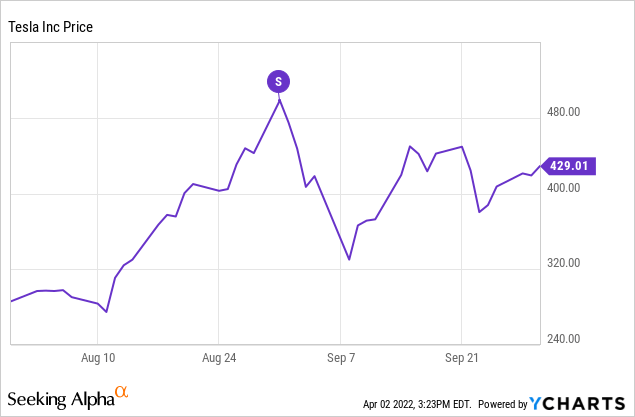
However, Tesla tends to be more volatile than many stocks, so perhaps Apple (AAPL) is a more apt comparison.
Apple announced its 4:1 stock split on July 31, 2020, and the stock began trading on an adjusted basis on August 31st. The chart below clearly shows where the stock jumped upon the announcement, rose through the split, then pulled back, much like Tesla.
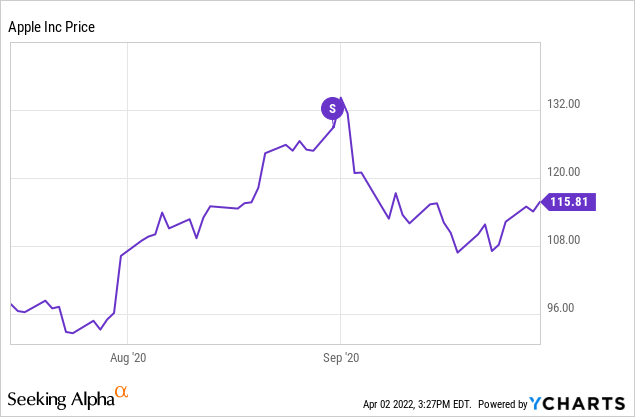
Does this mean that the same will happen with Google? Of course not. However, it is highly suggestive that there may be a solid buying opportunity in the days following the split.
Is Alphabet Stock A Buy, Sell, or Hold?
Alphabet stock has been a consistent outperformer for some time. Over the last year alone, it has provided significantly better gains than the overall market.
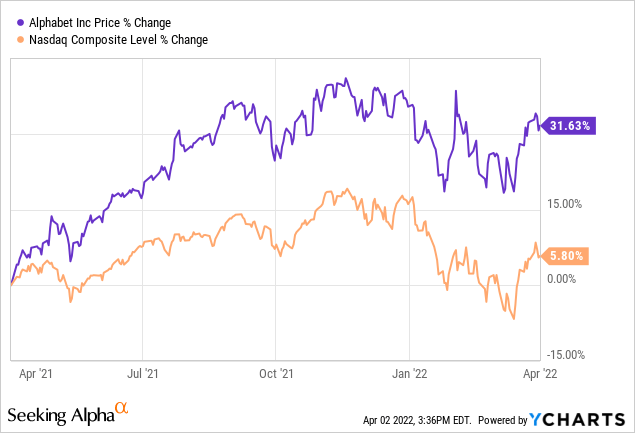
Wall Street analysts have a Strong Buy rating on the stock, according to Seeking Alpha’s Wall Street Analysts Rating center. Analysts have 49 Buy or Strong Buy ratings with one hold and no sell ratings. Alphabet stock has significantly outperformed the market over the last year, as shown above.
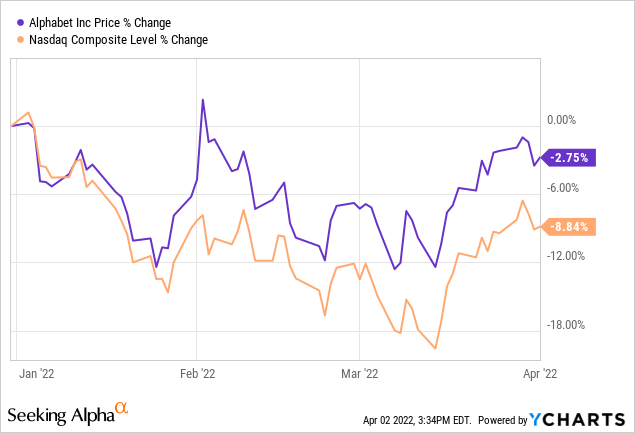
In 2022, the results haven’t been stellar, but the stock has significantly beaten the Nasdaq Composite (QQQ), as shown above. In a recent article before the split announcement, I speculated that Alphabet would be one of the best long-term stocks for investors. I continue to believe it will outperform the market moving forward.


Be the first to comment